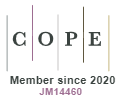The “modern modernity” of Brasília City in the “riobaldiano” inland town
DOI:
https://doi.org/10.5585/dialogia.v5i0.890Keywords:
Arte moderna. Arquitetura moderna. “Modernidade moderna”. Sertão. Sustentabilidade cultural.Abstract
For Father Henrique Vaz, we are living through “modern modernity” whose fundamental philosophical traits were defined by Descartes in the 17th century. Since then, there have been ecological disasters, the gap created between the rich and the poor, as a byproduct of economic globalization and the herald of a post-modernity era. However, loyalty to Henrique Vaz’s concept confirms that the system of the predominant reasons in society, which is the definer of “modern modernity”, remains stronger than ever. Swiss theologian Francis A. Schaeffer(1985) conceives this tendency as a staircase in which the higher steps set novelties in thought, which subsequently; in different times, are accepted by the lower ones. On this staircase, the Modern Art Week in 1992 and Brasília are genuine expressions in the step of Brazilian “modern modernity” art and the “Bastille” which represented the occupation of the New Capital, and the reaction of the general culture step to this modernity.Downloads
Download data is not yet available.
Downloads
Published
2008-04-02
How to Cite
MONTI, Estevão. The “modern modernity” of Brasília City in the “riobaldiano” inland town. Dialogia, [S. l.], v. 5, p. 81–92, 2008. DOI: 10.5585/dialogia.v5i0.890. Disponível em: https://uninove.emnuvens.com.br/dialogia/article/view/890. Acesso em: 19 oct. 2024.
Issue
Section
Artigos






